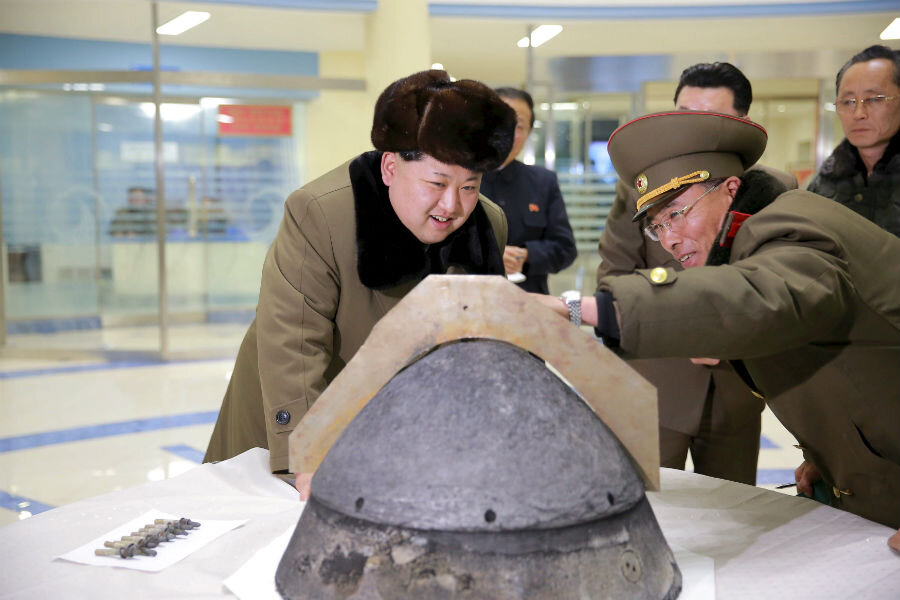North Korea fires missiles after South Korean missile-defense announcement
Loading...
North Korea launched three ballistic missiles Tuesday, traveling between 300 and 360 miles into the sea off the country's eastern coast. The launch is the latest in a series of North Korean missile tests and follows an announcement from South Korea that it would deploy a US missile-defense system.
In June, the country successfully fired two long-range Musudan missiles with a range of more than 2,000 miles, as the Christian Science Monitor reported at the time. On Tuesday, they fired two short-range Scud missile and a mid-range Rodong missile, according to the US military.
The U.S. military said it detected launches of what it believed were two Scud missiles and one Rodong, a home-grown missile based on Soviet-era Scud technology.
Unlike other recent tests, Tuesday's were not seen as a test, but rather a show of force, East Asian security expert Melissa Hanham told Reuters.
"This smells political rather than technical to me," Ms. Hanham, a senior research associate at the Middlebury Institute of International Studies at Monterey, Calif., said.
The move comes less than two weeks after South Korea officials announced July 7 that they would deploy a US missile-defense system capable of intercepting short- and medium-range missiles, as the Monitor reported at the time. After that announcement, North Korea had threatened a "physical response."
The US government had been encouraging South Korea to deploy the system to protect itself against North Korea, but South Korea had been hesitant that it the deployment of the system could worry China and risk their cooperation to help sanction North Korea's missile program.
"North Korea's nuclear test and multiple ballistic missile tests, including the recent intermediate-range ballistic missile (IRBM) launches, highlight the grave threat that North Korea poses to the security and stability of the Republic of Korea (ROK) and the entire Asia-Pacific region," a joint statement from the US and South Korea read.
China's concerns revolved around fears that it could destabilize the region and might provide early warning "in the fantastic and highly unlikely event of a nuclear confrontation", Nicholas Kitchen of the London School of Economics and Political Science told the Monitor earlier this year.
South Korea had decided to deploy the system in light of increasing missile and bomb tests from the North. North Korea conducted its fourth nuclear test in January, and held a launch of a spacecraft many suspected was actually a missile test in February. Following those developments, the UN Security Council issued tough new sanctions on North Korea.
"The threat to our national security has grown very quickly in a short period of time," South Korea's Prime Minister Hwang Kyo-ahn said, according to the BBC. Although the tests had been "rare" they are now taking place "continuously" this year, he said.
The Japanese government also spoke out against the launch. The June launch was in the direction of Japan.
"The latest launch is a breach of the UN Security Council resolution and is extremely hazardous to shipping and aircraft and we have strongly protested," Japanese officials said in a statement.






